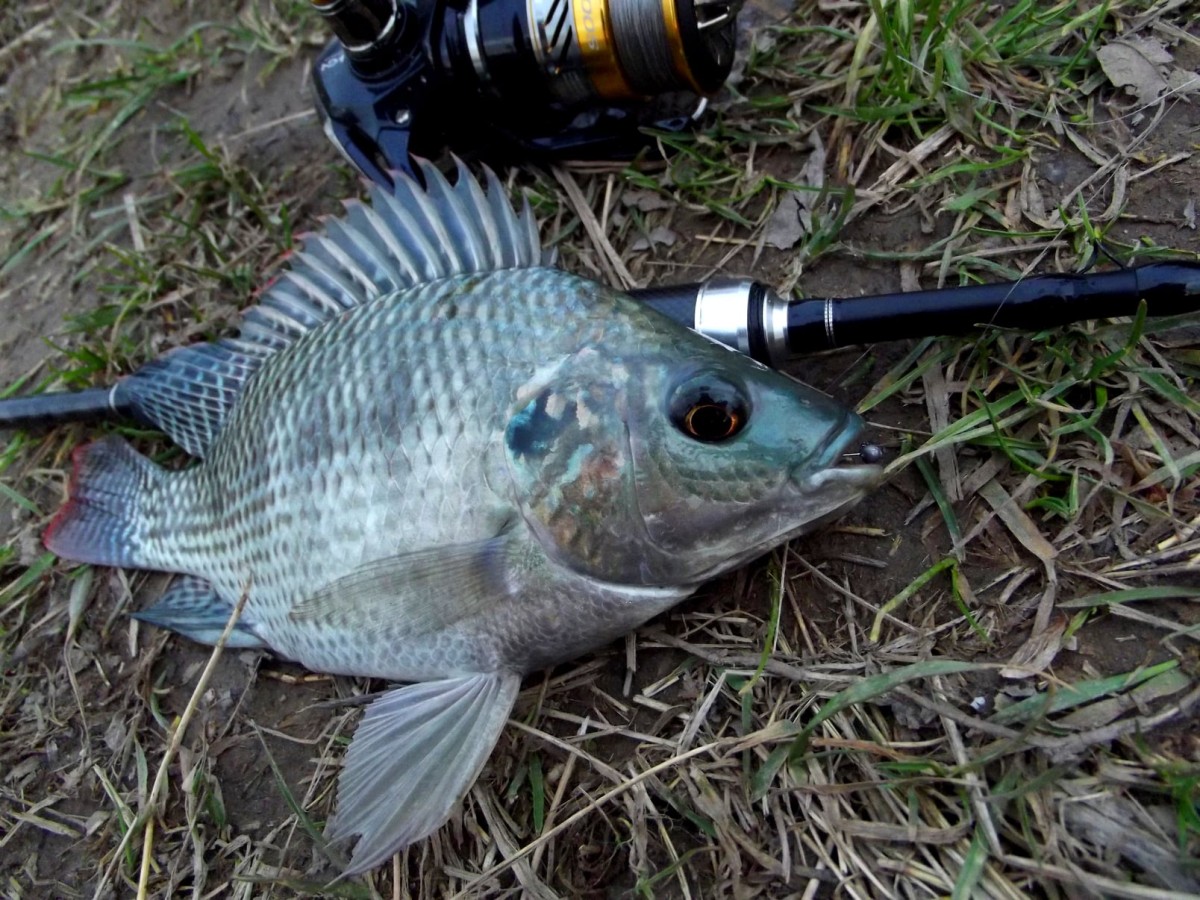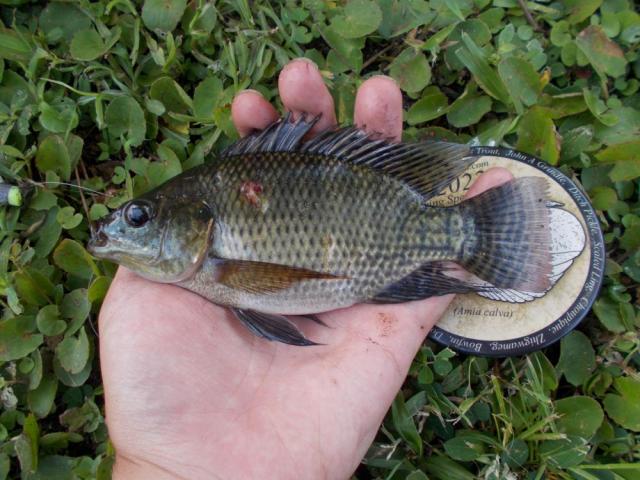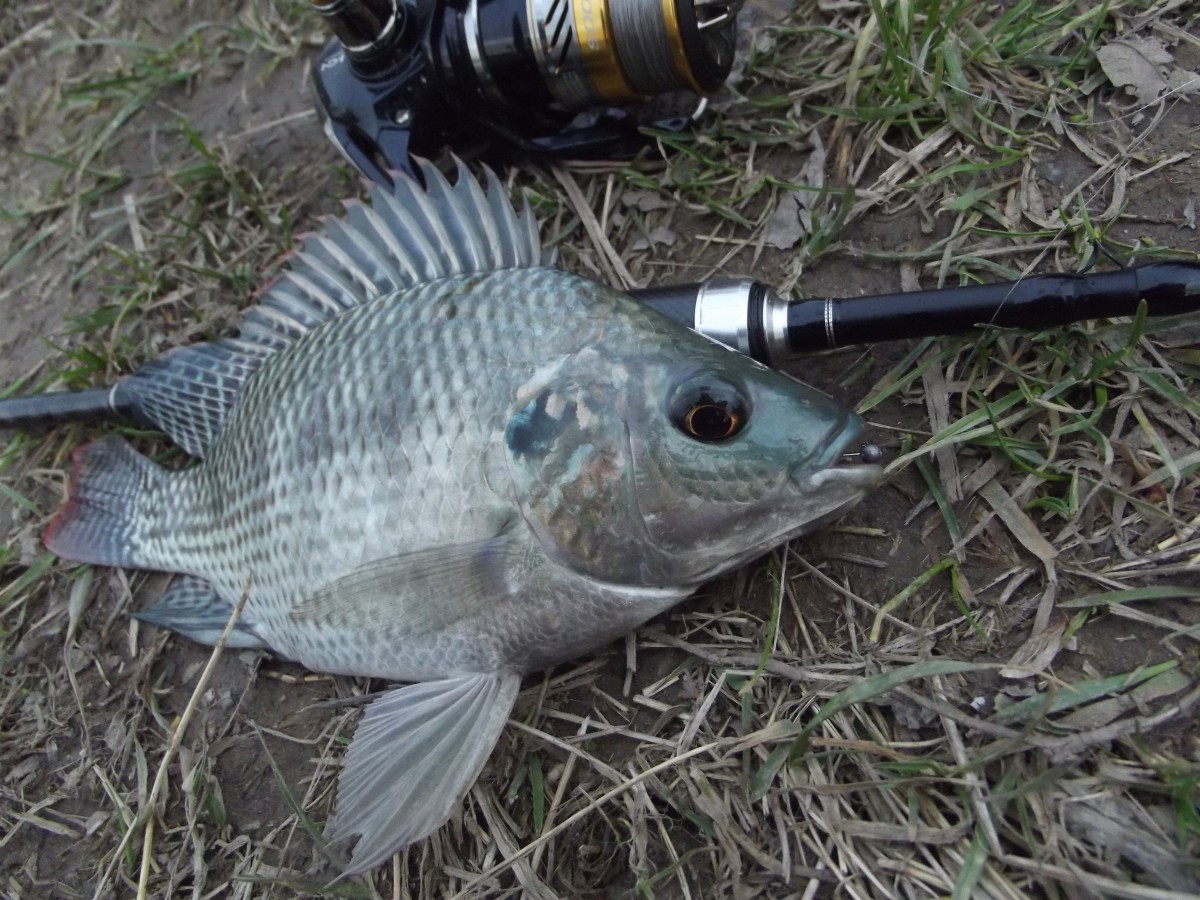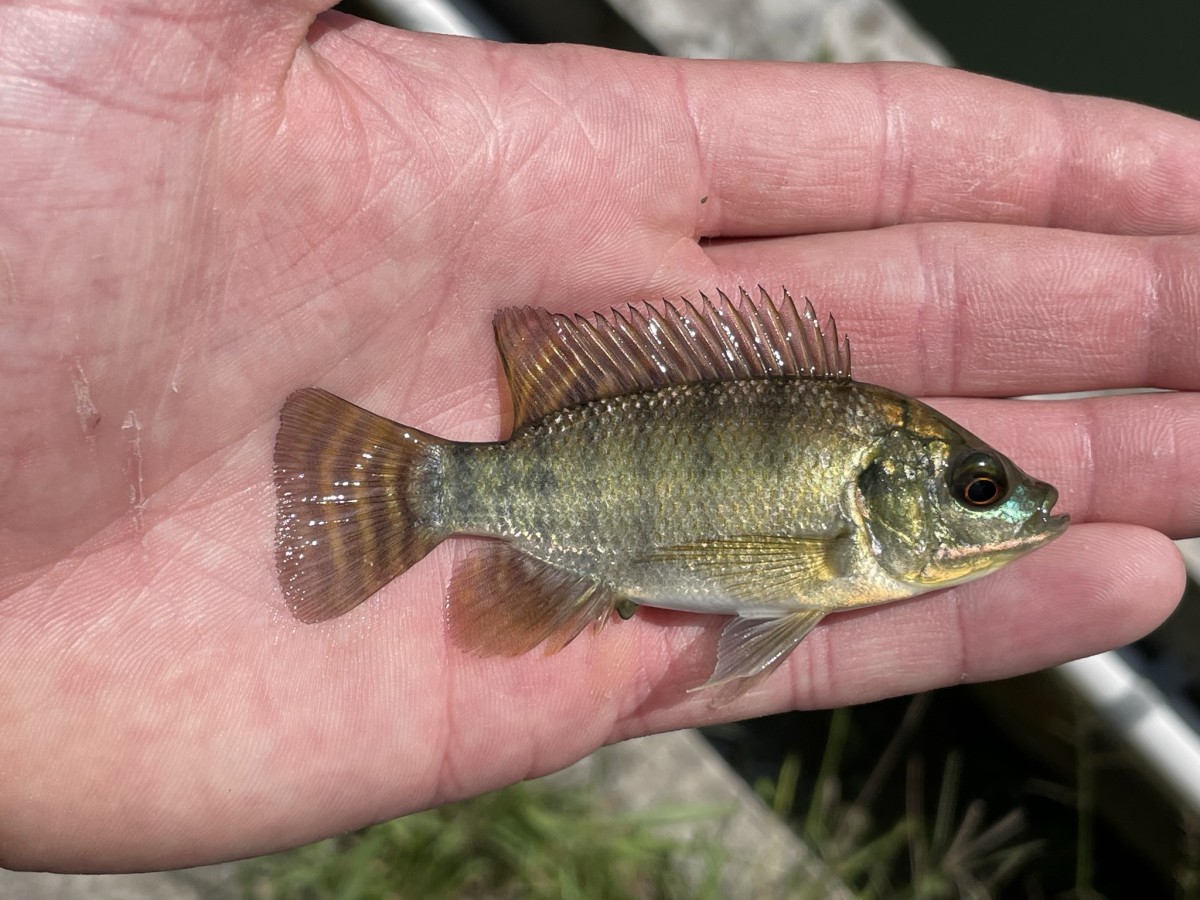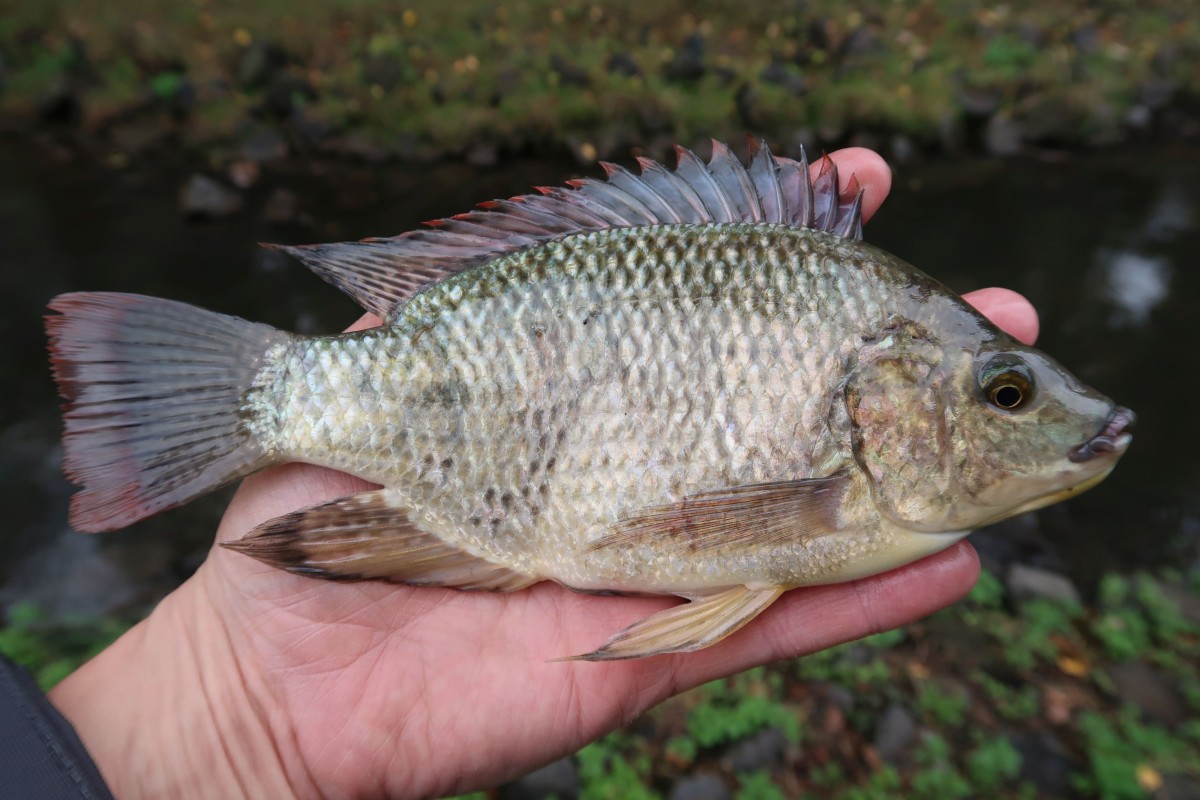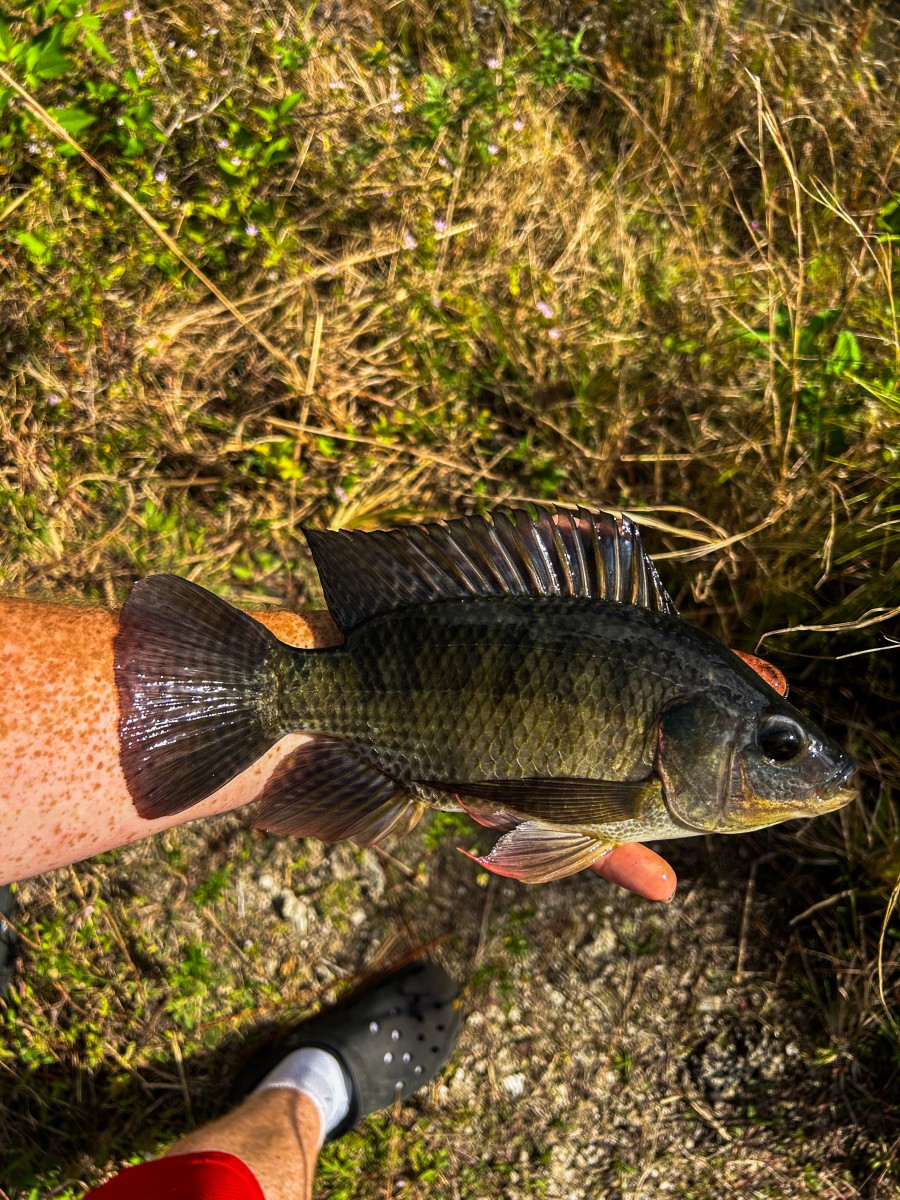Nile tilapia
(Oreochromis niloticus)
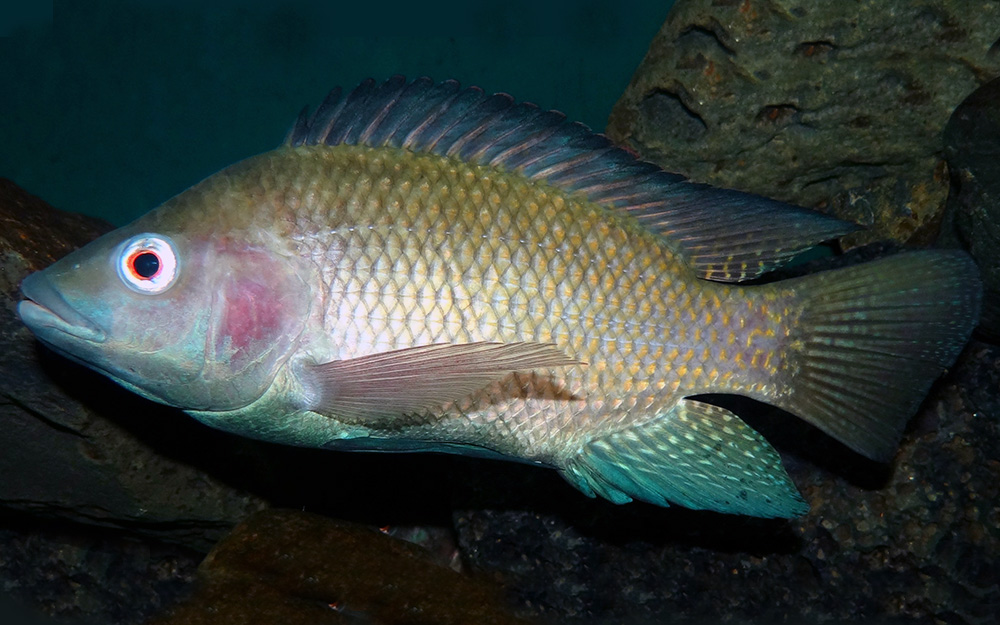
Classification
General data
The Nile tilapia (Oreochromis niloticus) is a species of tilapia, a cichlid fish native to the northern half of Africa and the Levante area, including Israel, and Lebanon. Numerous introduced populations exist outside its natural range. It is also commercially known as mango fish, nilotica, or boulti. The first name leads to easy confusion with another tilapia which is traded commercially, the mango tilapia (Sarotherodon galilaeus).
Description
The Nile tilapia reaches up to 60 cm (24 in) in length,[2] and can exceed 5 kg (11 lb). As typical of tilapia, males reach a larger size and grow faster than females.
Wild, natural-type Nile tilapias are brownish or grayish overall, often with indistinct banding on their body, and the tail is vertically striped. When breeding, males become reddish, especially on their fins. Although commonly confused with the blue tilapia (O. aureus), that species lacks the striped tail pattern, has a red edge to the dorsal fin (this edge is gray or black in Nile tilapia), and males are bluish overall when breeding. The two species can also be separated by meristics. Because many tilapia in aquaculture and introduced around the world are selectively bred variants and/or hybrids, identifying them using the standard features that can be used in the wild, natural types often is not possible. The virtually unknown O. ismailiaensis has a plain tail, but otherwise closely resembles (and may only be a variant of) the Nile tilapia. Regardless, O. ismailiaensis might be extinct, as its only known habitat in northeastern Egypt has disappeared, although similar-looking individuals (perhaps the same) are known from the vicinity.
Nile tilapia can live for more than 10 years.
Range and habitat
The Nile tilapia is native to larger parts of Africa, except Maghreb and almost all of Southern Africa. It is native to tropical West Africa, the Lake Chad basin, and much of the Nile system, including lakes Tana, Albert and Edward–George, as well as lakes Kivu, Tanganyika, and Turkana, and the Awash and Omo Rivers.
In Israel, it is native to coastal river basins.
It has been widely introduced elsewhere, both in Africa and other continents, including tens of countries in Asia, Europe, North America, and South America. In these places, it often becomes highly invasive, threatening the native ecosystems and species. However, some introduced populations historically labelled as Nile tilapia either are hybrids or another species; the Nile tilapia and blue tilapia especially often have been confused.
The Nile tilapia can be found in most types of freshwater habitats, such as rivers, streams, canals, lakes, and ponds, and ranging from sea level to an altitude of 1,830 m (6,000 ft). It also occurs in brackish water, but is unable to survive long-term in full salt water. The species has been recorded at water temperatures between 8 and 42 °C (46 and 108 °F), although typically above 13.5 °C (56.5 °F), and the upper lethal limit usually is at 39–40 °C (102–104 °F).
Also, some variations occur depending on the population. For example, those in the northern part of its range survive down to the coldest temperatures, while isolated populations in hot springs in the Awash basin and at Suguta River generally live in waters that are at least 32–33 °C (90–91 °F). Although Nile tilapia can survive down to relatively cold temperatures, breeding generally only occurs when the water reaches 24 °C (75 °F).
